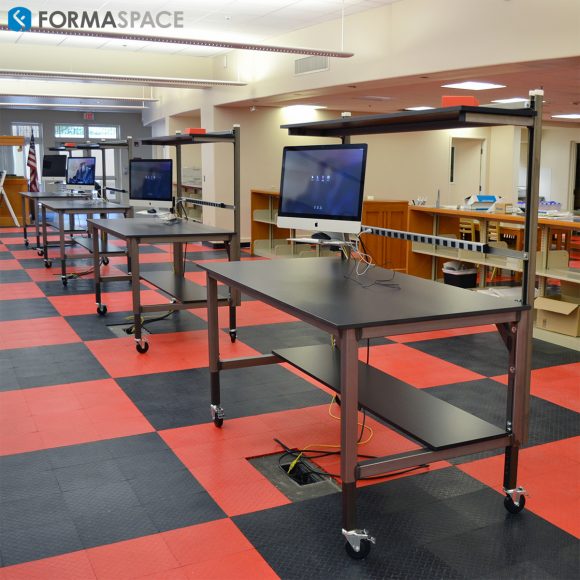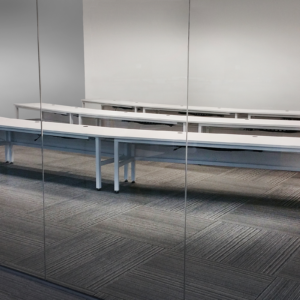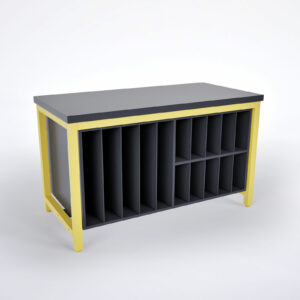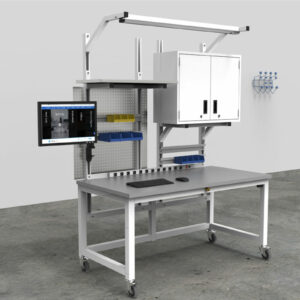The commercial office market has been dealt a heavy blow in 2020 due to the coronavirus pandemic.
But recent breakthroughs in health science research, such as the long-anticipated coronavirus vaccine from Pfizer BioNTech, are generating renewed interest in science real estate projects on the part of commercial property developers.
Two recently greenlit projects exemplify this emerging science park construction trend.
The first project is a new life science hub on the west side of Manhattan. Taconic Partners has engaged the architecture firm Perkins & Will to design the new facility on the site of a former auto showroom. When completed in early 2023, the new building will become part of an emerging life science cluster on Manhattan’s West Side.
The second new science park development is taking place in Philadelphia, within the University Park redevelopment zone (located west of the Schuylkill River near Drexel University and the University of Pennsylvania), which is becoming the heart of Philly’s healthcare, life sciences, and biotech industries. The new 250,000 ft.² eight-story building, designed by The Sheward Partnership, will feature advanced sustainability and energy efficiency features allowing it to achieve LEED and WELL v2 platinum certifications.
These two new projects are breathing life into what has been a disappointingly moribund commercial property development market up and down the East Coast.
Hopefully, it signals a new positive economic trend that coincides with the dawn of the New Year and the promise of the widespread coronavirus vaccine program that will allow people to once again return to work.
But these new developments have also piqued our curiosity about science parks and how they came to be. It turns out they have a long and interesting history that’s closely aligned with some of the major developments in American health science, consumer goods manufacturing, military and aerospace applications, and more.
The Age of Discovery and the Development of the Modern Science Park
When we think of Tesla and Menlo Park today, we think of Silicon Valley in California, where Elon Musk makes Tesla cars, and Menlo Park is the home of SRI International, the famed research institute founded by Stanford University.
But if we turn the clock back to the late 19th century and asked someone about Menlo Park or Tesla, we would get quite a different answer. In those days, Thomas Alva Edison was known as The Wizard of Menlo Park *– after the location of the famous New Jersey laboratory he built in 1876 and where he subsequently invented the phonograph and the incandescent light, just two of his over 1,000 patented inventions.
(*Confusingly, Menlo Park in California was founded first, and Menlo Park in New Jersey was named after it.)
Groundbreaking Science Park Pioneer: Thomas Edison’s Menlo Park Laboratory
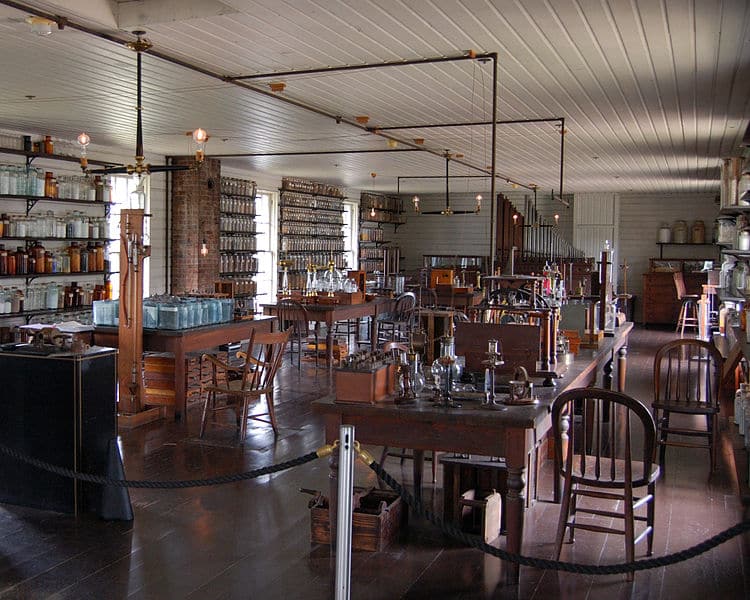
It’s hard to overstate the importance of Thomas Edison’s pioneering Menlo Park research facility, yet in many ways, his scientific discoveries and technical research projects were matched by those of his close friends Henry Ford (inventor of the Ford Model T and founder of the Ford Motor Company), Harvey Firestone (the rubber tire company magnate).
The three friends, (who called themselves the vagabonds) not only collaborated on research projects they also vacationed together in Florida every winter.
Firestone, who founded his company in Akron, Ohio (already home to three other leading tire manufacturers, including B.F. Goodrich and Goodyear), made tires for Ford cars. Ford, whose industrial discoveries include the introduction of the moving assembly line and the use of high tech materials, such as vanadium steel, pursued many other areas of technology as well, including developing tractors, building airplanes (the famous Ford TriMotor), and developing artificial rubber at the Edison Botanic Research Corp. in Fort Myers, Florida.
In his later years, Edison’s company General Electric would vigorously compete with George Westinghouse (who got his start inventing air brakes on trains) for supremacy in setting the standards for the nascent electrical grid; Edison initially promoted DC current, while Westinghouse created a more practical AC-based power grids suitable for more efficient long-distance electric transmission.
Here is where Tesla comes into the picture – not Elon Musk, but the original Tesla, Nikola Tesla, the Serbian immigrant electrical engineering genius. Tesla licensed his alternating current (AC) induction motor to Westinghouse and later advised him how to build a successful two-phase AC generating system at Niagara Falls. Westinghouse bought Tesla’s patents, including the design for a unique induction motor system (used today in Tesla cars). Sadly, Tesla’s own laboratory in Manhattan was destroyed by fire.
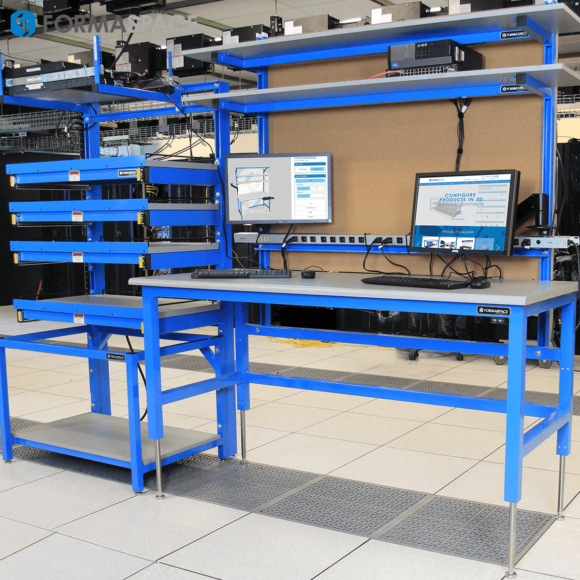
Key Research Facilities in the Development of Airplanes and Aeronautics
Over 100 years later, General Electric would also be known for manufacturing jet engines, but we’re getting ahead of ourselves.
Another key step in the history of science parks takes place in Dayton, Ohio, where the Wright brothers built the first successful self-powered aircraft, which first flew on the windy dunes at Kitty Hawk, North Carolina. Thanks to Henry Ford’s penchant for preserving history, we can see the original Wright Brothers building, which Ford had transported to Greenfield Village in Michigan.
Thanks to the Wright Brothers’ invention, the Dayton area became an important hub for airplane and aeronautics research.
Alexander Graham Bell, the inventor of the telephone, also had a strong interest in aviation. One of the first people Bell hired for his Aerial Experiment Association (AEA) was Glenn Curtiss, who later helped standardize training for US Naval aviation in Dayton. His subsequent venture, the Curtiss Aeroplane Company, grew rapidly during the war to become the world’s largest aircraft manufacturer – and a bitter rival to the Wright brothers. And today, the fields of Huffman Prairie where the Wright Brothers tested their Wright Flyer III is the site of Wright-Patterson Air Force Base, one of the military’s leading logistics operations centers and aerospace research facilities.
Trailblazing Aviation Research Facility: The Wright Bros. Bicycle Shop and Dayton’s National Aviation Heritage Area
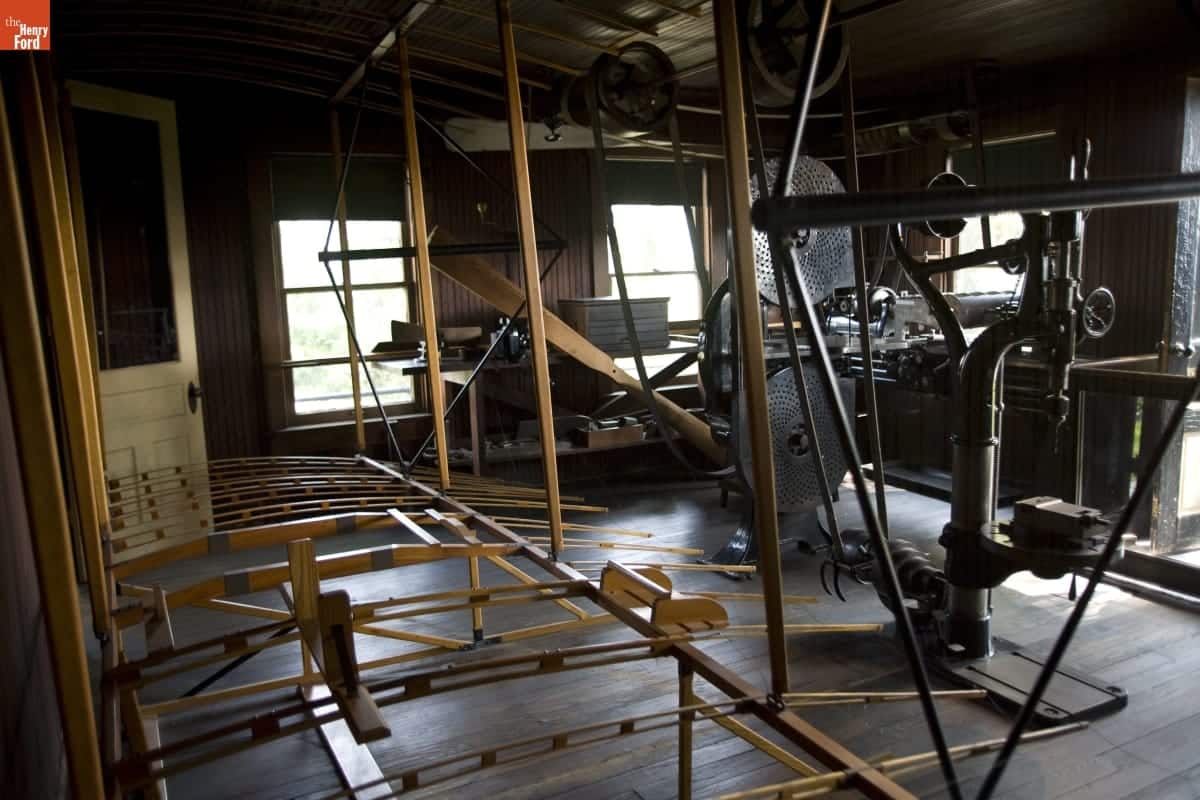
Research and Development of New Household Consumer Products
The 1920s and 1930s saw a rapid rise in packaged consumer goods, from fully prepared cereals (from the Post Company and Kellogg’s of Battle Creek, Michigan) to soaps, washing powders, and toothpaste from Cincinnati-based Procter & Gamble. Researchers at Kodak’s facility in Rochester, New York, also played a central role in documenting American life through their popular line of Brownie cameras. Polaroid, founded in 1937, was another innovation juggernaut, called the “Apple Computer” of its day. Other important research centers, such as the Battelle Memorial Institute, founded in Columbus, Ohio in 1926 (probably the largest research company you’ve never heard of), offered some of the first “contract for hire” research services in the world. (More about Battelle later.)
But our pick for the most innovative science park of the period belongs to the headquarters of Johnson Wax in Racine, Wisconsin. The breathtaking, light-filled facility, designed by none other than Frank Lloyd Wright, is a technological masterstroke – with its thin white interior columns soaring to the roof create individual “lily pads” that support the transparent roof structure.
Landmark Consumer Products Research Facility: Johnson Wax Building
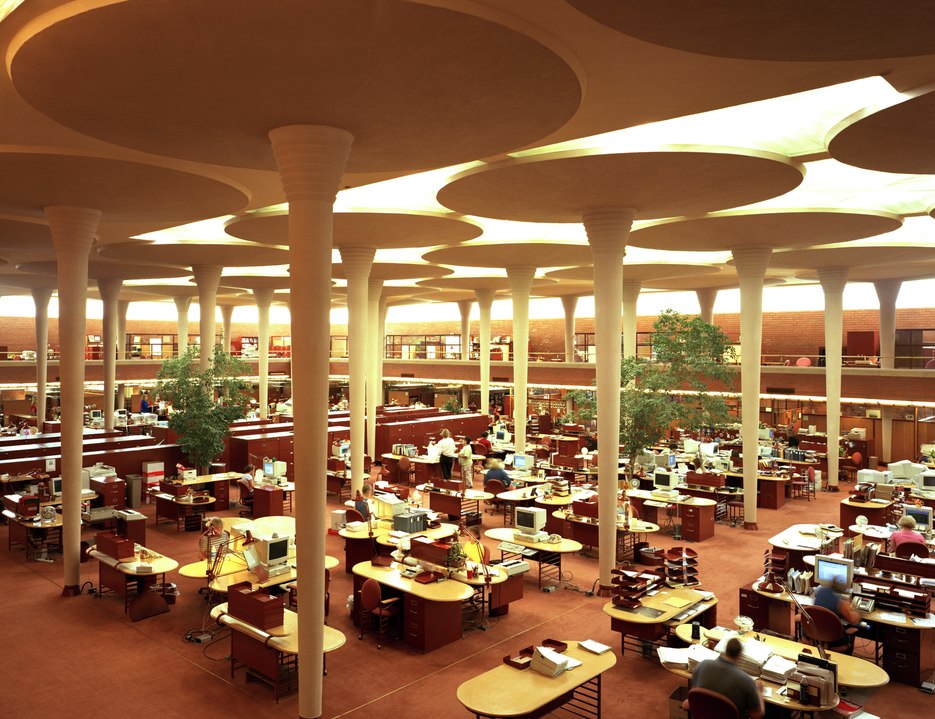
The Manhattan Project: The Push to Harness the Atom
The most monumental research and engineering project the world had ever seen got its start in part thanks to a hand-delivered letter.
The letter, written by Albert Einstein to then-President Franklin Delano Roosevelt, conveyed Einstein’s fears that the Nazis could successfully develop a nuclear-based weapon of unfathomable power and destruction.
In response, Roosevelt set in motion the most intensive, expensive, and secret project during World War II: the Manhattan project, which ultimately developed the nuclear bombs used at Hiroshima and Nagasaki.
The scale of the undertaking was mind-boggling. Entire new cities were built in secret, at Hanford in Oregon, at Oak Ridge outside Knoxville in eastern Tennessee, and at Los Alamos, high on a picturesque mesa an hour northwest of Santa Fe, New Mexico.
The undertaking drew on research resources from around the nation, from Dr. Fermi’s experiments in nuclear fission at the University of Chicago to IBM’s punch card tabulating systems used by physicist John von Neumann’s team at Los Alamos to calculate the implosion forces of the first atomic bomb.
The consequences of this endeavor strongly influence the course of research history to this day. After successfully creating the first atomic bombs (and later hydrogen thermonuclear weapons), many of these facilities and their follow on operations have moved to peacetime research in nuclear power and renewable energy. Coincidentally, the Battelle Memorial Institute (mentioned above) helps co-manage many of these research facilities today, such as the Los Alamos National Laboratory.
Nuclear Physics and Energy Science Park: Los Alamos National Laboratory
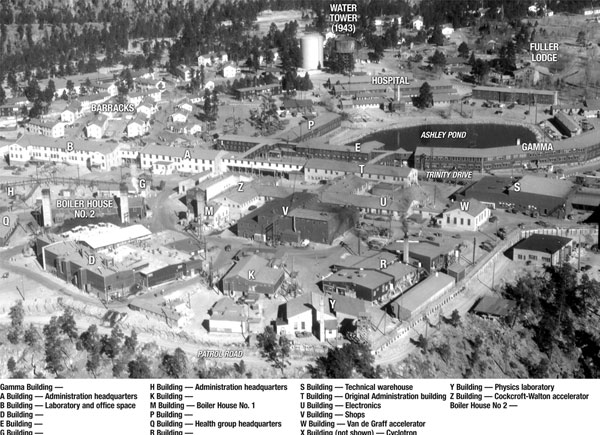
Jet Engines, Rocketry and the Development of the Space Industry
Though German was defeated by the allies in World War II, there was great unrest in the military leadership concerning German technological advances in jet engine powered aircraft (viz. the Messerschmitt ME 242) as well as Hitler’s vengeance weapons used in the London Blitz, the V1 and V2 rockets developed under the leadership of Wernher von Braun.
In what might be generously called an example of expediency over principle, American military brass rounded up von Braun’s engineers and brought them to America in a secret operation known as Operation Paperclip. After a seemingly idle purgatory in Fort Bliss, Texas, von Braun and his team of German rocketry engineers were brought to Huntsville, Alabama to create the new Ordnance Guided Missile Center (OGMC) – known today as the Marshall Space Flight Center.
Von Braun was successful in downplaying his Nazi past and became a famous proponent of space exploration, first proposing a space station in the first of a series of articles published in Collier’s Weekly. He later collaborated with Walt Disney to promote space travel, influencing later space pioneers, such as Elon Musk.
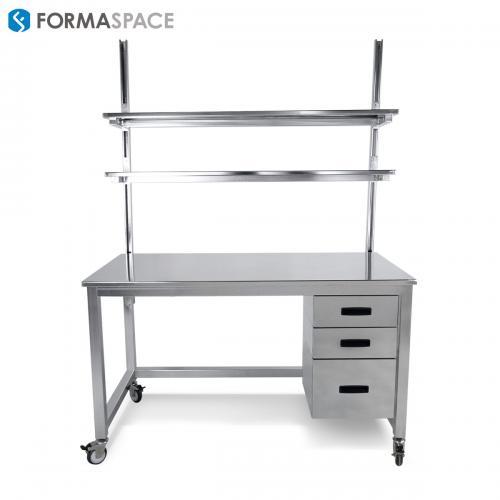
After the Soviet launch of their Sputnik satellite, the pressure was on the US military to match and exceed these achievements. Early rocket trials were not promising, however, with many embarrassing failures, but, in time, a revised Mercury-Redstone rocket lifted Alan Shepherd into space. Under von Braun’s leadership, the team at Marshall developed the Saturn V rocket, which brought the Apollo astronauts to the moon.
Ballistic Missile/Rocket Science Park: Marshall Space Flight Center, Huntsville, Alabama
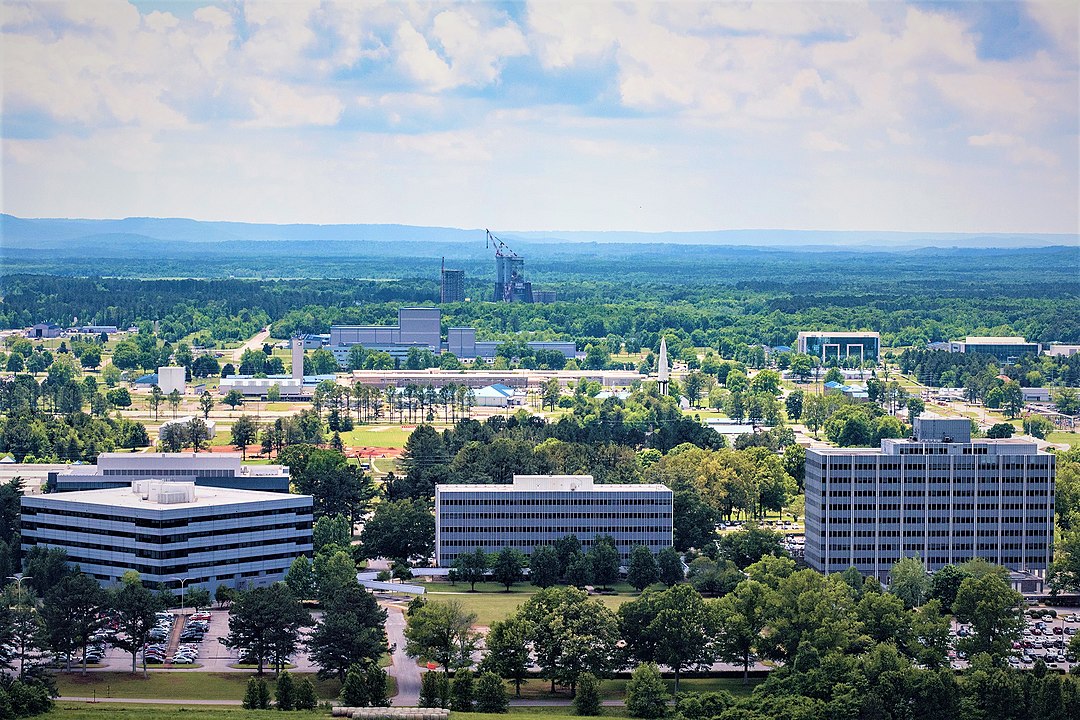
The Critical Role of University Research
During the outset of the Civil War, the US government came up with an innovative plan for granting land to the states to fund a network of American colleges and universities. The Morrill Acts of 1862 and 1890 established these so-called land-grant universities which form the backbone of scientific academic research across the country.
In the early post-World War II era, Stanford University (itself not a land-grant university but the recipient of a vast amount of “farm” property donated by railroad robber baron Leyland Stanford in memory of his late son) came up with a new concept for promoting public-private partnerships between academic institutions and private enterprise.
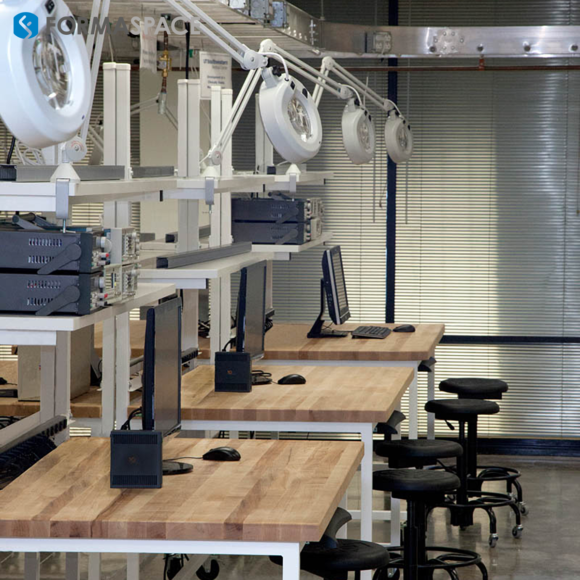
The result was the Stanford Research Institute (now SRI International), created in Menlo Park, California in 1946. (As mentioned earlier, Menlo Park California predates Menlo Park in New Jersey by decades, and it’s just a happy coincidence that it has the same down name as Edison’s famous laboratory.)
The concept was innovative in several ways. It was one of the first so-called “technology transfer” operations that allowed the University to profit from its research investments, setting up a model used by many higher learning institutions today. It also helped pave the way for the future Silicon Valley, serving as a model for Xerox’s future Palo Alto Research Center (PARC) –famous for inspiring Steve Jobs to incorporate a graphical user interface and a mouse into their early Macintosh computer.
Private Partnership University Research Facility: Stanford Research Institute (now SRI International)
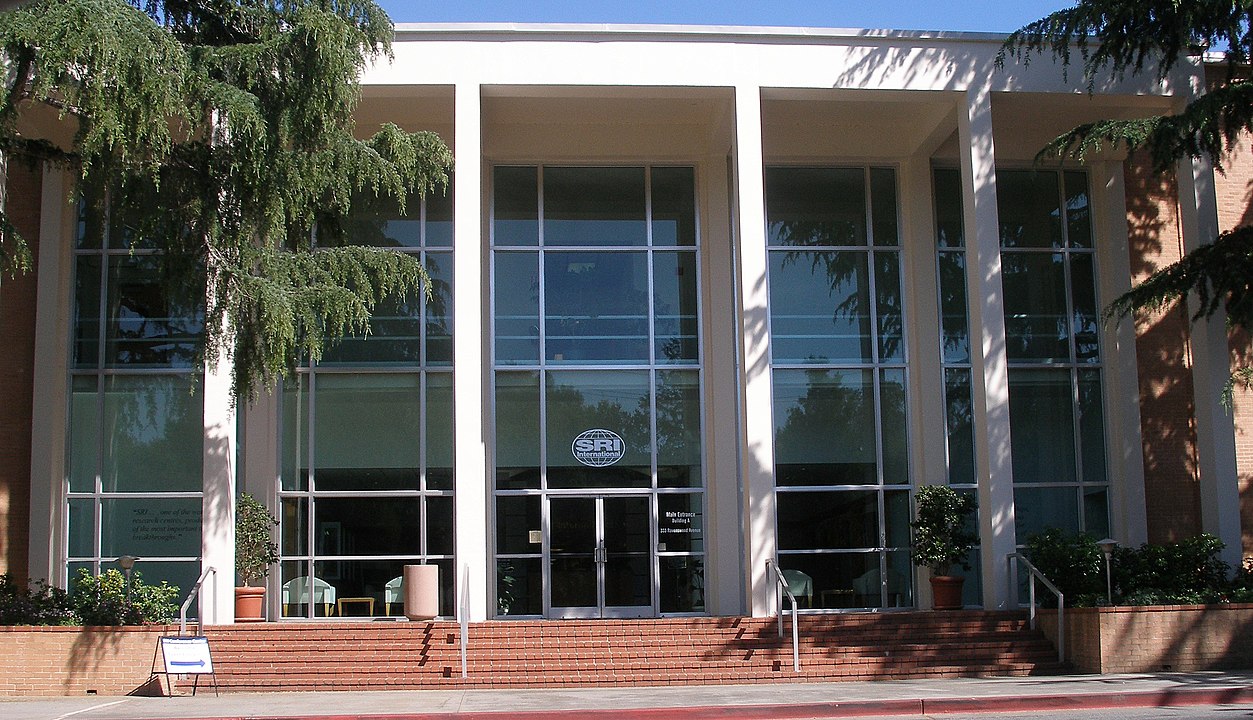
Saving Lives: Leading-Edge Research in Health Science
At the same time that Stanford was launching their research, civic-minded leaders in Houston, Texas, conceived of creating a dedicated health science park, today known as the Texas Medical Center (TMC), the largest concentration of healthcare facilities in the world.
World-class surgeons such as Dr. Michael DeBakey, famous for his innovative surgical procedures such as coronary bypass operations, blood vessel grafts, and artificial hearts, help make the Texas Medical Center world-famous. Other leading TMC institutions, such as M.D. Anderson Cancer Center, have introduced new clinical treatments that bring hope to cancer patients.
America’s Largest Health Science Park: The Texas Medical Center, Houston
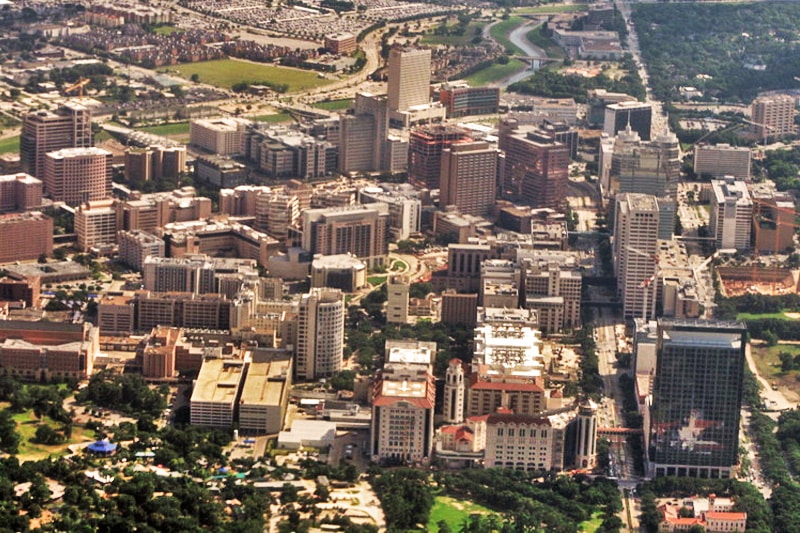
The Modern Age of Computing and Digital Electronics
We touched on Alexander Graham Bell’s love of airplanes earlier, but he’s best known for his invention of the telephone. And thanks to the research legacy of the company he founded, the Bell Telephone company, and its research arm, Bell Labs, we can trace a direct lineage from telephone communications to the digital transformation that has defined the 21st century.
How so?
The answer is Bell Labs.
For nearly half a century, Bell Labs reigned supreme in the research field. Located south of New York City in Holmdel, New Jersey, researchers working in the Eero Saarinen-designed facility created a vast range of innovations that impact our lives even today, from the original transistor concept to the UNIX operating system.
Semiconductor companies Fairchild, Texas Instruments, and Intel can trace their digital roots back to Intel. So too can Apple computer, which uses a flavor of the UNIX operating system to power its desktop computers.
The Research Mecca of Digital Computing: The Bell Labs research center (Now Nokia Labs) in Holmdel, New Jersey
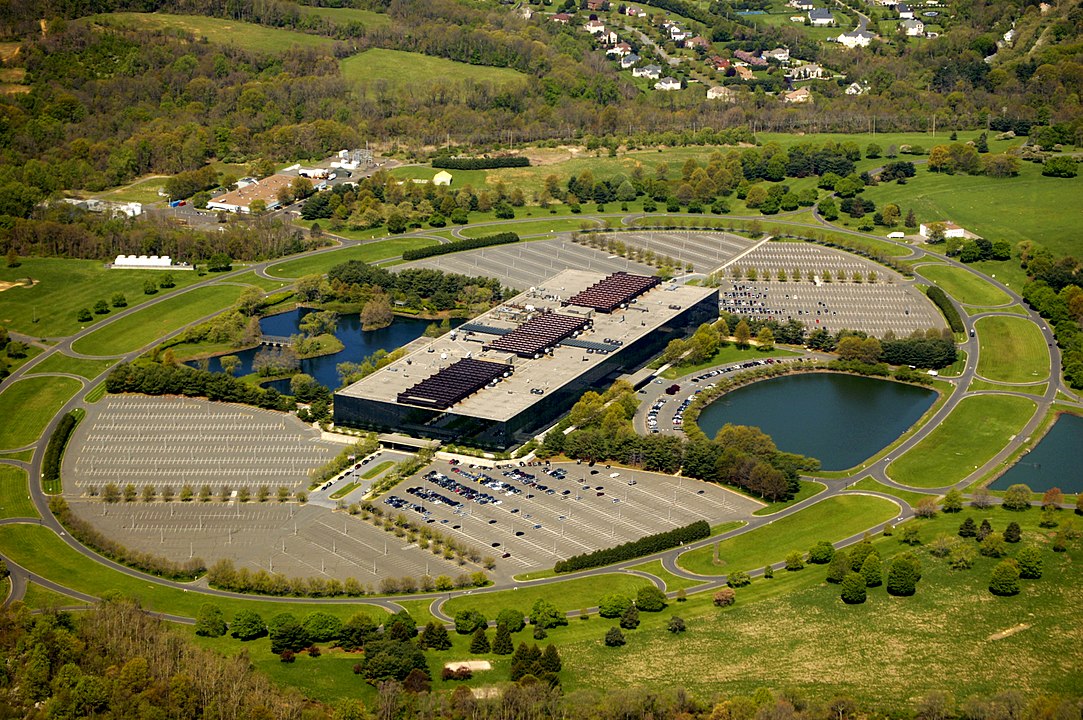
Product Design in the Age of Mobility and Mass Production
As the manufacturing industry matured in the second half of the 20th century, companies began to realize that creative product design could drive significant sales increases. Industrial design pioneers such as Raymond Lowy helps companies create brand awareness through attractive products car manufacturers in Detroit invested heavily in creating research parks dedicated to automotive styling, including the Cranbrook school of design in Detroit. But to a great extent, a new school dedicated to industrial design — Arts Center – located in the hills of Pasadena above Los Angeles has become the new heavyweight in product design. (Today, the vast majority of prominent car designers are Art Center graduates.)
Iconic Transportation and Consumer Product Design Facility: Art Center
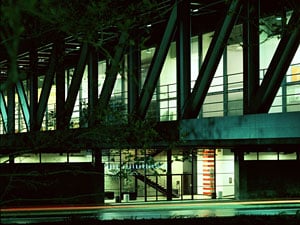
Venture Capital, Accelerators and Business Incubators
As those working in the research community are too painfully aware, the federal government’s contributions toward research projects are significantly down compared to years past.
That may be one of the reasons that many researchers are increasingly turning to private venture capital funding sources, where they can also take advantage of so-called business accelerators or incubators that can host early-stage startup companies, providing them business support facilities and, where applicable, laboratory research space.
The business accelerator concept has taken off nationwide. Companies such as Johnson & Johnson have invested heavily through their J-Labs initiative at multiple sites across the country.
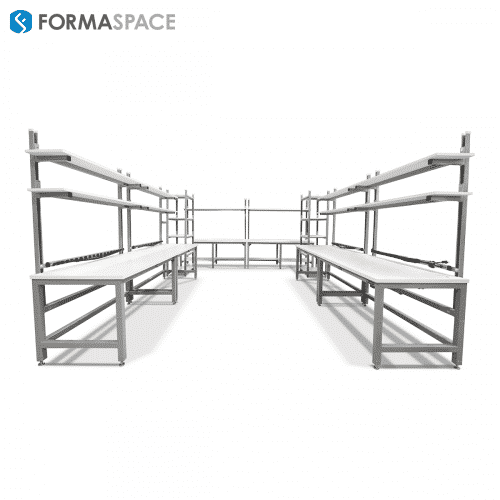
But the big kahuna in the room is Silicon Valley’s Y-Combinator. Founded in 2005, this business accelerator is famous for launching some of the top high-tech startups, including Stripe, Airbnb, DoorDash, Instacart, Dropbox, Twitch, and Reddit.
At the Heart of the Venture Capital – Business Accelerator Universe: Y-Combinator

The Industries of Tomorrow: Data Analysis, Media Content Creation, Automation, AI, EVs/AVs, and Robotics
We looked at a short history of science parks, from Edison’s Menlo Park laboratory to today’s Silicon Valley startup accelerators. What’s next for the future?
For one, the coronavirus pandemic may create some long-term changes in the way we work together. Thanks to remote work, companies such as Oracle and Tesla feel they can relocate without losing a lot of employees and are reportedly moving their operations out of high-priced Silicon Valley to Formaspace’s hometown of Austin, Texas. These two new headquarters will bolster Austin’s reputation as an emerging leader in some of tomorrow’s key technologies, such as electric and autonomous vehicles (think Tesla and nVidia). (It will also exacerbate our other problem as well, jammed roads!) Other areas, such as greater Miami, may benefit as companies look to relocate from the North East to sunny south Florida.
If pressed, what would we pick as the most significant science park for the future?
The answer is we’d actually pick two.
The first is Apple Park, the iconic round headquarters which opened in 2017. Apple’s famed industrial designer, Jony Ive, worked closely with fellow Brit, architect Norman Foster, to create a lyrical, yet sustainable, energy-independent design that expresses an inherent optimism, openness, and dare we say it, joy.
Will the future be so bright? We don’t know, so we’ll hedge our bets and also nominate the headquarters of the National Security Agency in Fort Meade, Maryland – whose massive data processing power reportedly makes it the biggest consumer of electric power in the state. Data analysis may prove to be the new future after all – a modern version of the “plastics” advice given to young Dustin Hoffman in the film The Graduate.
Time will tell how it all turns out.
A Tie: NAS and Apple Park, Representing Different Views of the Future.
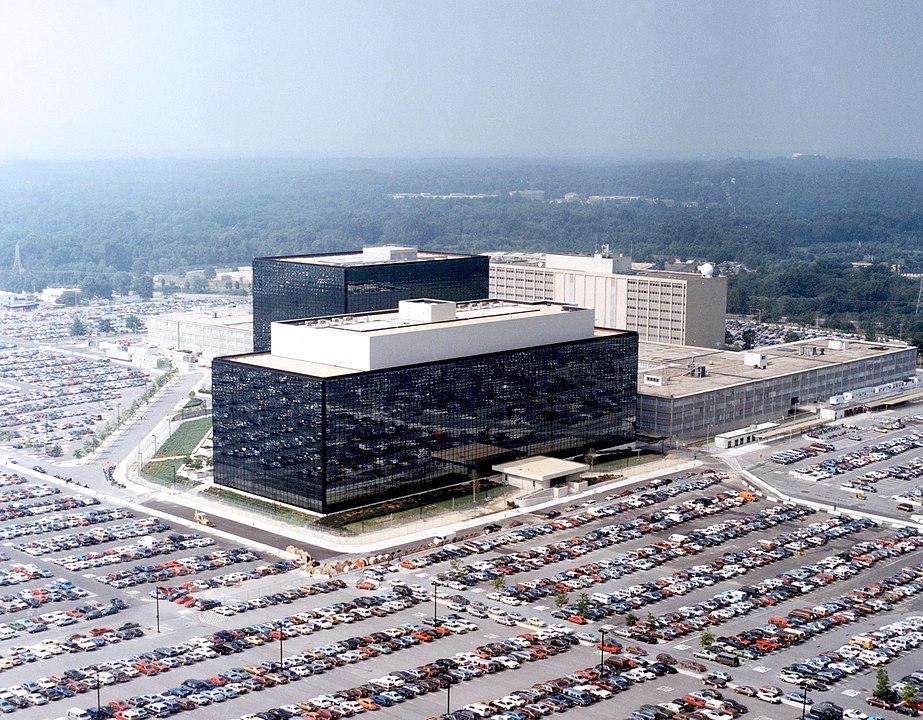
Formaspace is your Laboratory Furniture Partner
If you can imagine it, we can build it.
If you’re looking for the highest quality made in America furniture for your research facility in laboratories, Formaspace is ready to assist. We manufacture all our products here at our headquarters in Austin, Texas.
Make the connection.
Contact your Formaspace design consultant today and find out why our clients – including SpaceX, Oculus, Toyota, Busch, Yeti, Apple, Google, Twitter, and Capital One – choose Formaspace furniture.



